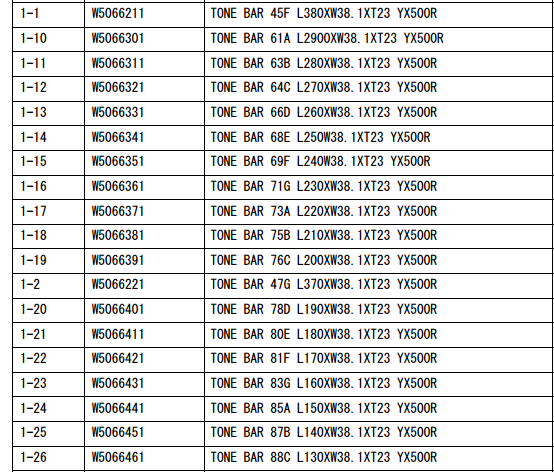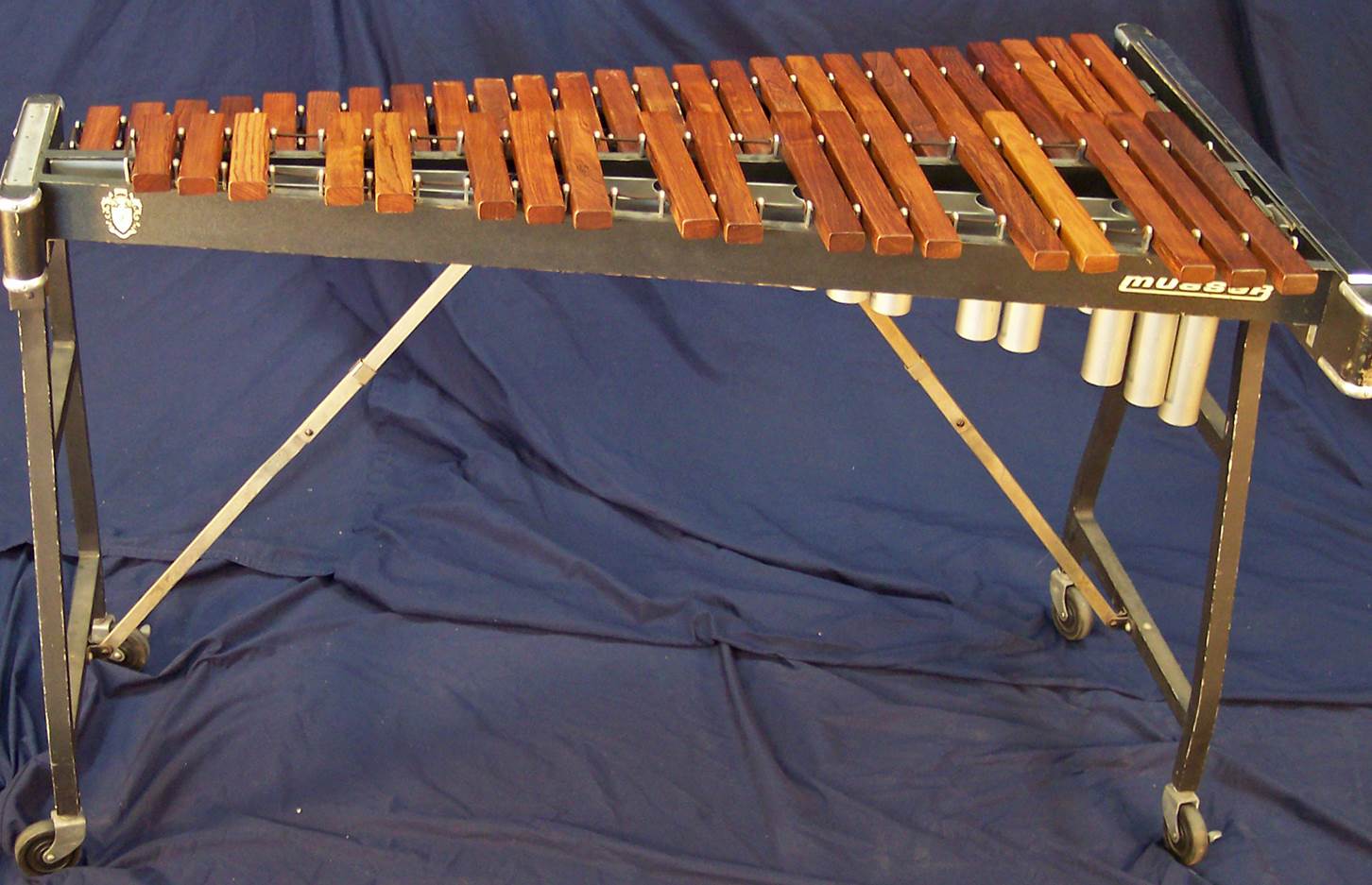Having never played a xylophone (or even seen one up close) I decided my first step was to check some out – first on the web, and the up close and personal.
Typical Characteristics of Commercial Instruments
I found a lot of pictures on the web of commercial instruments made by Musser, Malletech, Deagan, Yamaha, etc. that I used to sort of check out the least common denominators. Most concert instruments were 3.5 octaves, which means they had 44 bars that typically spanned the range F4-C8. This range seemed to be most common, so I decided to use it to baseline my design. I also discovered that that there are basically two tunings: The A4 bar can either be tuned to a frequency of 440 Hz or 442 Hz. The literature suggested that 442 tended to sound brighter with an orchestra and is more common, so I decided to tune mine to that frequency.
Bar Materials
I also saw that there were at least three bar materials that were common. The first is a synthetic called Kelon. I’m not sure exactly what Kelon is, but it kind of feels like fiberglass. The advantage of Kelon is that it is cost effective and doesn’t change tune with humidity and temperature. Here’s a link to a pretty nice Musser xylo made of Kelon. Through my research, it appeared that Kelon is primarily used for instruments that see a lot of travel and abuse (e.g. schools).
I also saw a lot of instruments made of an exotic hardwood called Padauk. Here is a link to a Yamaha xylophone made of Padauk. It appeared that instruments made of Padauk were more expensive than those with Kelon, yet less expensive than those built with Honduras Rosewood, which is the traditional wood used to build xylophones and marimbas.
Ah Honduras Rosewood…the holy grail of xylophone woods (cue angel chorus and sunbeams). As you move up the xylophone food chain, pretty much all of the high-quality instruments are made of Honduras Rosewood. It turns out that this wood is unique in its properties relative to making idiophones (Remember? Instruments that you whack.) If you check out the paper by Aramaki cited below, you can see that they build bars from 59 species of wood. Which one came out on top? You guessed it, Honduras Rosewood.
Dimensions
OK, so after a little research, I had settled on a note range, a tuning pitch, and a bar material. The only basic characteristic left to decide was size. If you troll around the web, you can see that bar sizes vary quite a bit. For example, from the LaFavre site, I found the dimensions of the F4 bar (the longest bar) on a Deagan was 12.81 x 1.93 x 0.95 inches. However, the F4 from a the Kori instrument I measured was almost 17 inches long. These tended to be the extremes I found, and most other instruments had bar lengths within this range. As we will see later, a wide range of bar lengths can be shaped to yield the desired frequencies. From a physics standpoint, the larger bars will produce more more volume, as they have more surface area that is creating sound. However, this greater amplitude comes at the expense of compactness and portability.
In the end, I modeled the dimensions of my instrument off of a rosewood Yamaha instrument that seemed to be popular. The specific instrument is a Yamaha YX-500R and can be found at this site. I liked the overall dimensions of the Yamaha, as my instrument has to fit in my house. Best of all, I was able to find a exploded diagram with parts list on the Yamaha site! Here is one of the diagrams.

and here is a section of the parts list.

The bar description has the length and width of the bars. Sweet! The longest bar on this instrument is 380 x 38 mm which is about 15 x 1.5 inches, which is right in the middle of the range of most of the xylos I found. Also, by following the dimensions of the Yamaha instrument, I was able to ensure that I would build a xylophone that was 1) about the size expected by a musician and 2) had bar lengths that were guaranteed to be tunable.
Next Up
In this discussion, I focused mostly on the physical attributes of the commercial instruments that I found. In my next post I will dig in to the sound characteristics, including more than you probably want to hear about the spectral analysis software I wrote, and the results from a few instruments I analyzed.
References
Aramaki et al. 2007: Aramaki, M., Baille`res, H.,Brancheriau, L., Kronland-Martinet, R., and Ystad, S.(2007). “Sound quality assessment of wood for xylophone bars”, J. Acoust. Soc. Am. 121, 2407–2421.
